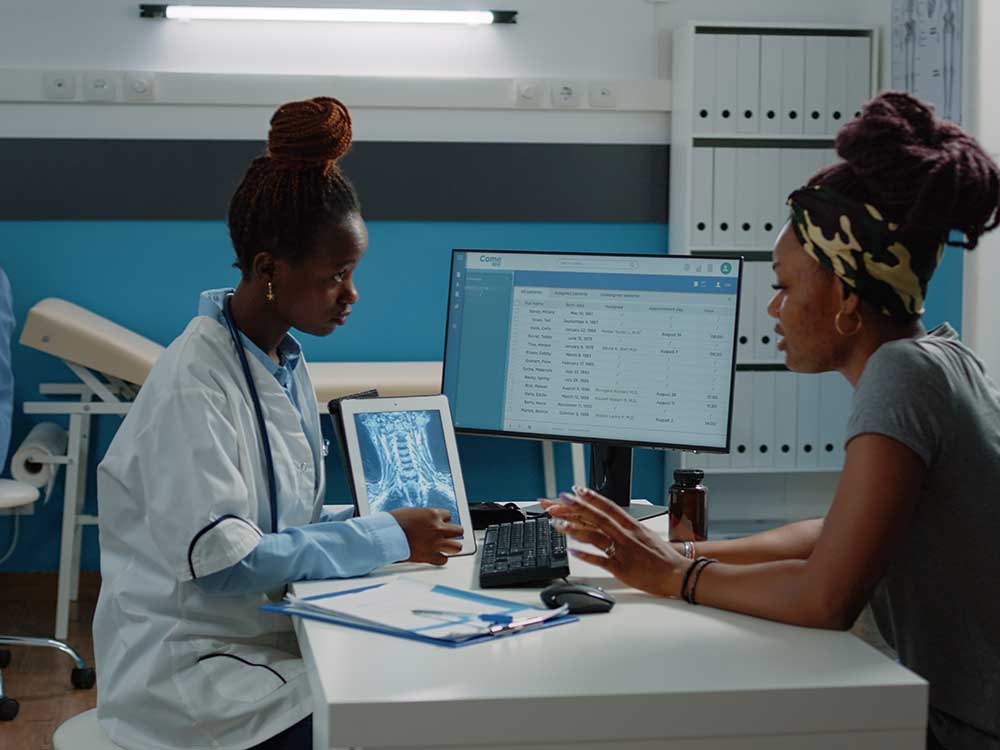A Total Overview to Medical Administration Certifications and Certifications
A Total Overview to Medical Administration Certifications and Certifications
Blog Article
Best Practices in Medical Management for Improving Efficiency and Reducing Prices
In the ever-evolving landscape of medical care, the pursuit of best techniques in clinical management is extremely important for improving performance and curbing expenditures. By integrating advanced modern technologies such as electronic health records and telemedicine, medical care carriers can streamline operations and enhance patient care. Modern technology alone is not a panacea; enhancing source appropriation and fostering collective interaction amongst care teams are just as essential. As organizations aim to stabilize top quality and cost, what methods should be prioritized to accomplish these double objectives? The solution to these inquiries hold the trick to a much more sustainable medical care system.
Leveraging Advanced Innovation
In today's rapidly progressing health care landscape, leveraging advanced innovation is no more optional however important for effective clinical administration. The combination of electronic options right into health care systems has transformed the way centers run, enhancing procedures and enhancing person care. Electronic Health Records (EHRs) are critical, providing detailed client data that can be accessed immediately by licensed personnel, therefore reducing redundancy and lessening errors. By centralizing patient info, EHRs remove the requirement for difficult documentation and assist in smooth communication amongst doctor.
Telemedicine is another technological advancement that has revolutionized person interaction. It supplies comfort for both clients and health care specialists by allowing remote examinations, which can decrease the requirement for in-person check outs and optimize visit organizing. Furthermore, telehealth systems can extend health care accessibility to country or underserved locations, bridging spaces in care distribution.
In addition, making use of Expert system (AI) and equipment discovering is coming to be significantly prevalent in predictive analytics, allowing for very early detection of prospective health and wellness problems and even more informed decision-making. These modern technologies, when integrated efficiently, can enhance diagnostic accuracy and individualize person therapy strategies, eventually resulting in enhanced healthcare outcomes and functional effectiveness.
Optimizing Source Allowance
Effective source allowance is vital for taking full advantage of the efficiency of clinical management. By purposefully taking care of resources such as workers, devices, and finances, medical care facilities can significantly improve their operational efficiency, enhance individual outcomes, and decrease unneeded expenditures. The very first step in optimizing resource allocation involves conducting a detailed evaluation of current possessions and determining locations where sources may be underutilized or overextended. This evaluation should be data-driven, utilizing metrics and analytics to educate decision-making procedures.
Prioritizing resource allowance based upon individual demands and service needs is crucial. This involves lining up sources with high-demand locations, such as emergency care or specialized treatments, to guarantee timely and reliable person care. Executing adaptable staffing designs can likewise maximize labor resources by changing workers appropriation in action to varying patient quantities. In addition, accepting telemedicine and various other technological remedies can alleviate physical resource constraints by using alternate opportunities for patient-provider communications.
Funds need to be diligently monitored and designated with strategic insight to sustain both temporary operational needs and long-lasting institutional goals. This consists of investing in training programs that boost staff expertises and taking on energy-efficient practices that minimize functional costs (medical administration). Ultimately, a maximized source allowance strategy fosters a lasting medical care setting that is receptive, reliable, and monetarily sensible
Streamlining Operations Processes
When healthcare centers aim to boost functional efficiency, simplifying process processes ends up being a pivotal emphasis. Reliable operations reduce like it redundancy, get rid of unneeded steps, and boost control among health care experts. This approach not only speeds up service delivery however additionally boosts the top quality of client care.

Following, modern technology assimilation plays a significant role in streamlining process. Applying digital health and wellness documents (EHRs) and electronic medical professional order access (CPOE) systems decreases documentation, minimizes human error, and guarantees details is easily accessible to all pertinent workers. Furthermore, leveraging telemedicine systems can improve individual consultations and follow-ups, minimizing the pressure on physical infrastructure.

Ultimately, streamlined process lead to cost decreases and enhanced person fulfillment, fostering an extra sustainable healthcare setting.
Enhancing Information Monitoring
Structure upon streamlined operations, optimizing information administration comes to be a crucial component ahead of time medical care management. Effective data management systems are essential for keeping accurate person records, boosting decision-making, and guaranteeing compliance with governing standards. By carrying out durable data management options, healthcare centers can enhance the high quality of client treatment while concurrently minimizing functional expenses.
One trick element of boosting information administration is the assimilation of innovative digital health record (EHR) systems. These systems promote the seamless click here for more exchange of patient information across various divisions, decreasing duplication of examinations and lessening errors. A well-designed EHR system supports information analytics, allowing doctor to identify patterns and make notified choices concerning client treatment.
Additionally, safeguarding patient data is extremely important. Taking on thorough cybersecurity measures, consisting of file encryption and routine audits, makes certain the stability and discretion of delicate details. This not only shields individuals yet also preserves the establishment's online reputation.
Buying personnel training is another crucial factor. Educating medical care experts on information management practices improves their capability to properly use innovation, causing enhanced patient end results. In verdict, enhancing data management with sophisticated modern technology and extensive training is vital for achieving efficiency and cost reduction in clinical management.
Fostering Collaborative Communication
An important element ahead of time medical management is cultivating collaborative interaction amongst medical care specialists. Effective interaction is vital for guaranteeing seamless individual care, optimizing therapy results, and lessening errors. By urging open dialogue and control throughout multidisciplinary teams, healthcare organizations can boost their functional performance and lower unnecessary expenses.
Central to this method is the combination of interaction innovations such as electronic wellness records (EHRs) and safe messaging platforms, which facilitate the quick exchange of important client info. These tools make it possible for health care companies to accessibility and share information in real time, making certain that all employee are notified and lined up in their decision-making procedures. Regular group conferences and interdisciplinary rounds can better promote a society of collaboration and liability.
Training programs focused on improving interaction skills are likewise important. These programs can aid personnel develop the ability to share info plainly and listen proactively, therefore minimizing misconceptions and promoting a helpful workplace. Additionally, embracing standard interaction methods, such as SBAR (Situation, Background, Evaluation, Referral), can simplify the exchange of info, guaranteeing that essential details are shared succinctly and efficiently. Ultimately, fostering joint communication results in boosted medical care distribution and price financial savings (medical administration).

Verdict
Including advanced technology, such as digital wellness records and telemedicine, together with maximized resource appropriation and streamlined workflow procedures, is important for enhancing performance in clinical Discover More Here administration. Effective information monitoring and cultivating joint communication among medical care groups are critical for decreasing redundancies and enhancing treatment high quality. By prioritizing precautionary treatment and engaging in top quality renovation efforts, medical care organizations can attain considerable price financial savings and improved person outcomes, thus ensuring sustainable medical care delivery in a progressively complex atmosphere.
Report this page